Species Interactions
1/90
Earn XP
Description and Tags
describe the different types of species interactions as well as coping mechanisms to competition, predation and coevolution
Name | Mastery | Learn | Test | Matching | Spaced |
|---|
No study sessions yet.
91 Terms
what are the species interactions
competition
predation
parasitism
mutualism
commensalism
amensalism
“in looking at nature, never forget that every single organic being around us may be said to be striving to increase its number” by?
Charles Darwin, 1859

an interaction between organisms or species in which both require a resource that is in limited supply (such as food, water, or territory)
competition (-/-)
intraspecific competition and interspecific competition
this happens when members of the same species compete with each other for resources like food, water, shelter, or mates
Intraspecific competition
for example, if you have a garden with many tomato plants, they might compete for sunlight, water and nutrients
this occurs when members of different species compete for the same resources
Interspecific competition
for instance, in a forest, rabbits and deer might compete for the same type of plants to eat
consumption of resources by two species, but one species may limit resource availability to other species
one species more efficiently uses a resource
exploitative competition
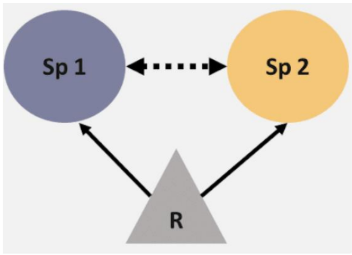
examples of exploitative species
ants and rodents compete for seeds'
occur among plants in the forest
happens when organisms directly fight or block each other from accessing resources, rather than just using up those resources
Interference competition
this can involve aggressive behaviors, physical obstruction, or even producing chemicals to harm competitors
animals might physically fight over territory or food
plants may release chemicals into the soil to prevent other plants from growing nearby

between individuals of different species, fighting over the same resource
aggression
one species has an advantage over the other
asymmetric
a biological process where plants affect, often inhibitory, the growth and germination of other species within their space
production of compounds that inhibit the growth of other plants
chemical release by one plant species negatively impacts another
allelopathy
important desert shrub
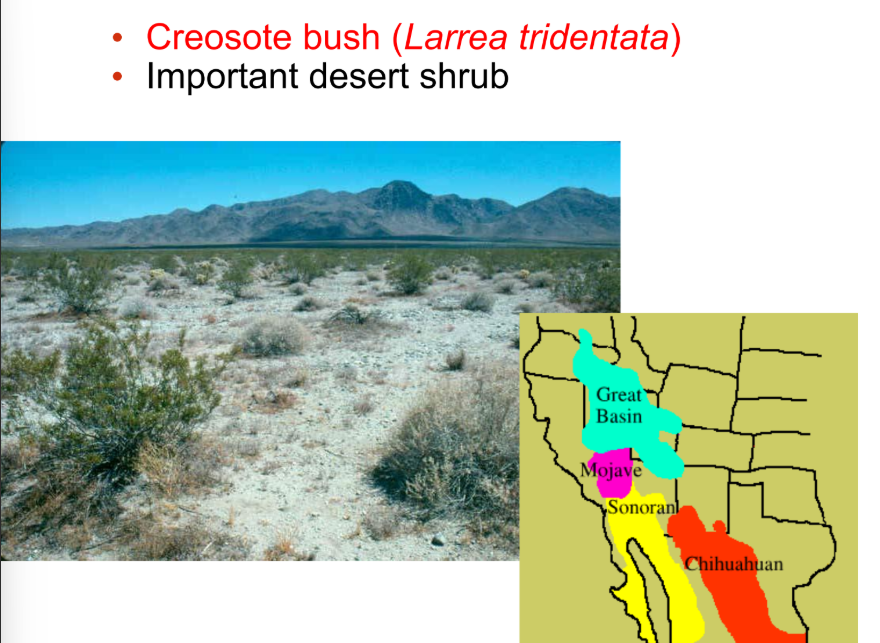
in coastal sage scrub (California)
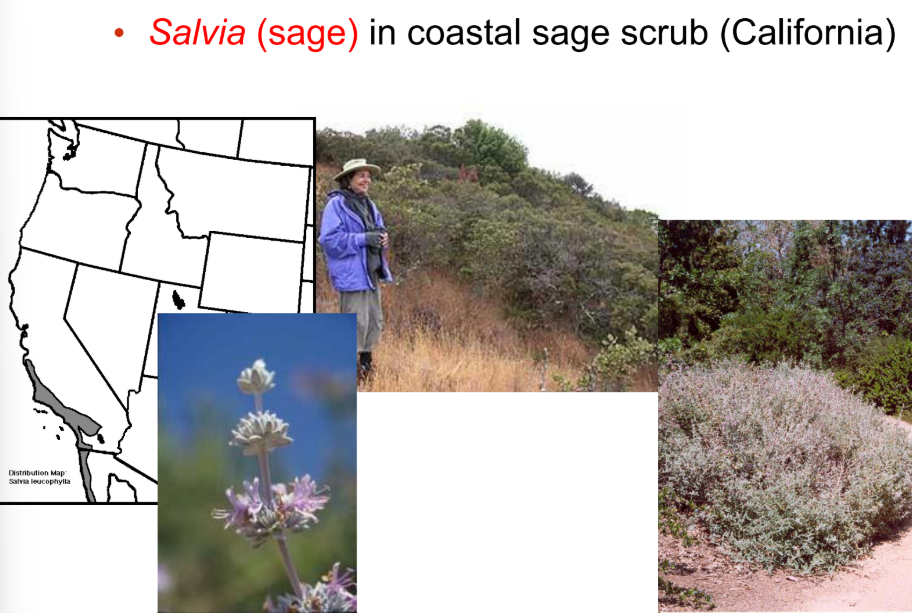
releases catechin into soil
when absorbed by roots of other plant species, causes wave of cell death to move up roots into stems
aids invasiveness
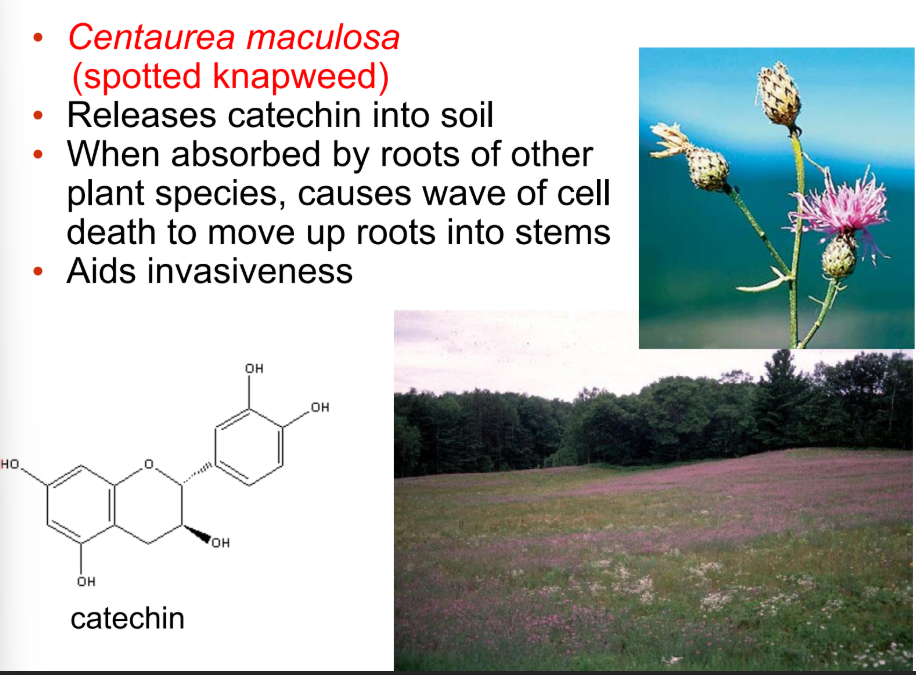
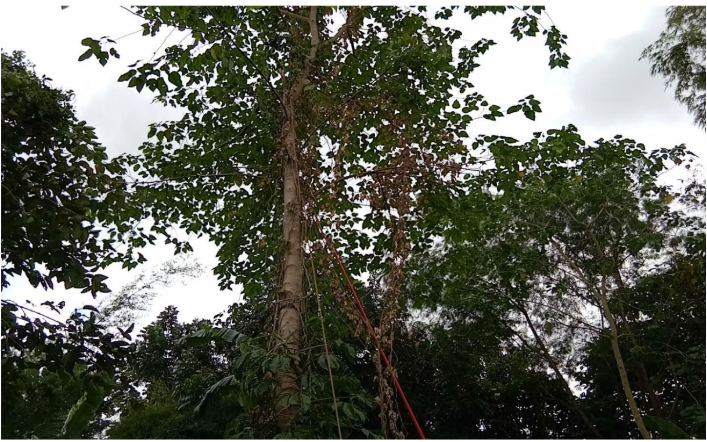
invasive shrub
Paper mulberry (Broussonetia papyrifera)
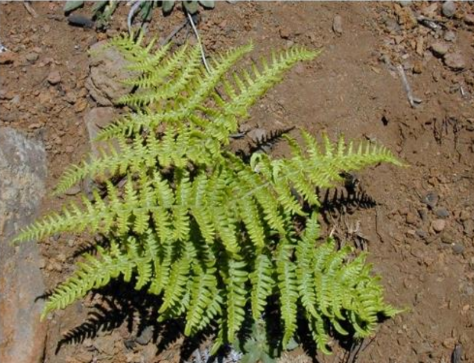
releases phytotoxins that gets concentrated in the soil’s upper surface which inhibit the growth of seedlings in many plants such as conifers by killing their germinating seeds
Bracken fern (Pteridium aquilinum)
methods of obtaining evidence of competition:?
Tansley’s Experiment
Connell’s Experiment
Diatom experiment
conducted in 1917, aimed to understand how competition affects the distribution of two plant species, Galium saxatile and Galium sylvestre, in different soil types
Tansley’s Experiment
grows best in calcareous soils as observed in nature
G. sylvestre
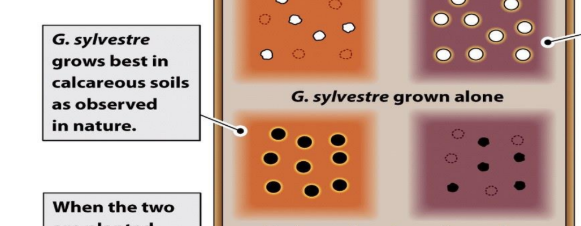
grows best in acid, peaty soils, as observed in nature
G. saxatile

what happens when you plant together G. sylvestre and G. saxatile
The results showed that when grown together, G. sylvestre outcompeted G. saxatile in calcareous soil, while G. saxatile dominated in acidic soil. This experiment demonstrated the concept of competitive exclusion, where one species outperforms the other based on environmental condition, influencing their natural habitats
studied competition between two barnacle species, Balanus and Chthamalus in the intertidal zone
Connell’s Experiment
can survive in the upper intertidal zone (high tide area) because it’s more resistant to drying out
Chthamalus
out competes Chthamalus in the lower intertidal zone (low tide area) where conditions are better
Balanus
refers to the role or space a species occupies in its environment, including where it lives and how it uses resources
Niche
what can you observe in Connell’s experiment
Connel observed that Chthamalus could survive across the entire intertidal zone (its fundamental niche) but was restricted to the upper zone (its realized niche( because Balanus outcompeted it in the lower zone.
This competition occurs because Balanus grows faster and physically pushes Chthamalus off rocks in the lower zone
the experiment demonstrates how interspecific competition can limit a species realized niche, forcing it to occupy only part of the space it could theoretically inhabit without competitors
shows how two species, Asterinella formosa (Af) and Synedra ulna (Su), compete for silica, which they need to build their cell walls.
Diatom experiment
what happens when Asterinella formosa (Af) and Synedra ulna (Su) are grown separately?
when grown separately, both thrive. However, when grown together, Synedra ulna is better at absorbing silica. As a result, it reduced the silica levels so much that Asterinella formosa can’t survive, leading to its extinction in the shared environment
effects of competition
Competitive exclusion principle (Gause’s Law)
Character Displacement
what leads to competitive exclusion?
strong competition can lead to competitive exclusion, local elimination of a competing species
what is the competitive exclusion principle
states that two species competing for the same resources cannot coexist if their niches overlap significantly.
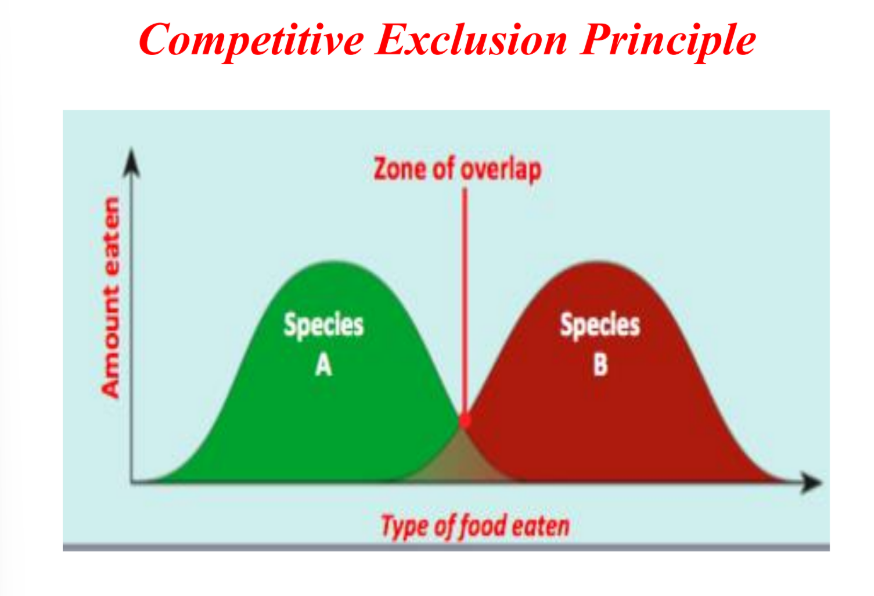
explain the graph
the principle states that two species competing for the same resources cannot coexist if their niches overlap significantly
in the graph, species A and B have overlapping zones where they compete for food
in the overlap zone, one species will outcompete the other over time
the weaker competitor must adapt, move to a different niche or face extinction
this principle explain how competition shapes ecosystems and species survival
evolution of anatomical differences that reduce competition between similar species
character displacement
occurs when a species separates into two separate groups that are isolated from one another
Allopatric speciation
occurs when population are physically separated by a geographic barrier (e.g mountains, rivers, oceans)
the separation prevent gene flow, leading to independent evolution and eventual reproductive isolation
ex: Darwin’s finches evolving on different islands due to ocean barriers
occurs when there are no physical barriers preventing any members of a species from mating with another, and all members are in close proximity to one another
Sympatric speciation
happens within the same geographic area, without physical barriers
populations become reproductively isolated due to factors like mutations, polyploidy, or ecological niche differences (eg, preferring different food sources)
ex: fish in the same lake evolving into distinct species by adapting to different feeding zones
is a driving force for species to evolve adaptations for continued survival
Interspecific competition
strategies to avoid competition
resource partitioning
temporal partitioning
developing specialized niches
is differentiation of ecological niches, enabling similar species to coexist in a community
ex: Anolis lizard species demonstrate this strategy
Resource partitioning
occurs when animals use the same resource but at different times (e.g one species feeds during the day while another feeds at night)
Temporal partitioning
give an example of developing specialized niches
ex: through natural selection, different species of honey creepers has evolved a specialized beak to take advantage of certain types of food resource
an interaction where one species kills and eats the other
predation
types of predation?
carnivory
herbivory
organism captures, kills, and consumes an animal
carnivory
consumption of plant material by an animal
herbivory
Where an organism (generally insect parasitoid) predates on another insects called host insect by laying eggs near or the host insects
Parasitoidism
these eggs, hatched into larva that feeds on tissues of host insect and subsequently killed and eaten by the insect parasitoid
has a life history intermediate between that of a predator and prey
Consume nutrients and energy from host
Parasitoid
Parasitic activities are limited to?
Parasitic activities are limited to larval stage
Larvae consume the host either?
Larvae consume the host either partially or completely
Adult parasitoid are free-living and may be?
Adult parasitoid are free-living and may be predaceous
Parasitoid are confined to what orders?
Confined to orders Hymenoptera and Diptera
What are the kinds of herbivores?
Grazers/folivores
Browsers
Granivores
Frugivores
Consume leafy materials
Grazers/folivores
Eat mostly woody materials and bark
Browsers
Consume plant seeds
Granivores
Consume fruit
Frugivores
What are some feeding adaptations of predators?
Some feeding adaptations of predators are:
claws
Teeth
Fangs
Stingers
Poison
Search image
Chemoreception
Auditory sensation
What is the predator adaptation of whales?
echolocation
Prey adaptations include:?
speed
Crypticity
Mimicry
Camouflage
What is cryptic coloration?
also known as camouflage
Helps an organism blend into its surroundings
Used to avoid detection by predators or prey
Ex: canyon tree frog
Strategy used by organisms to avoid detection
Camouflage
involves blending in with the environment
Can include odor, patterns, shapes or behaviors
Helps protect from predators or aids in hunting prey
Animals with effective chemical defense often exhibit bright warning coloration called?
predators are particularly cautious in dealing with prey that display such coloration
Aposematic coloration
What is aposematic coloration?
bright, conspicuous colors that signal danger or unpalatability
Warns predators to stay away
Often associated with toxins or defenses
Ex: the bright colors of poison dart frogs
Imitation of a poisonous or dangerous species by a non-dangerous species
Mimicry
a prey species may gain significant protection by mimicking the appearance of another species
A palatable or harmless species mimics an unpalatable or harmful model
a harmless species mimics a harmful one
Batesian mimicry
Two unpalatable species mimics each other
Mullerian mimicry
traits that help herbivores feed on plants effectively
Herbivore adaptations
Herbivore adaptation include?
includes specialized teeth (broad, flat molars-back teeth) for grinding plant material
Long digestive tracts to break down tough cellulose
Behavioral adaptations like selective feeding
Have broad, flat molars (back teeth) with rough surfaces, which are used for grinding up tough plant tissues
Herbivores
Poisonous irritating or bad tasting compounds synthesized by plants as a defense
Plant adaptations to herbivores: secondary compounds
Plant adaptations to herbivores include?
includes physical defenses (thorns, tough leaves)
Includes chemical defenses (toxins, bitter compounds)
What are secondary compounds?
poisonous, irritating or bad tasting compounds synthesized by plants as a defense
Are chemicals not used for growth or reproduction
Acts as detergents by making plants toxic, unpalatable or indigestible
Help reduce herbivore and increase plant survival
Ex: alkaloids in tobacco or tannins in oak leaves
Predator and prey species can?
Predator and prey species can drive each other’s evolution
intense natural selection pressures between predator and prey populations
Describe cases where two (or more) species reciprocally affect each other’s evolution
Coevolution
The parasite derives nourishment from another organisms which is?
The parasite, derives nourishment from another organisms, its host, which is harmed in the process
Two kinds of parasitism?
Ectoparasites and Endoparasites
live on the outside of the host’s body
Feed on blood, skin, or body fluids
Ex: ticks, lice, fleas
Ectoparasites
Songbirds are often heavily parasitized by?
by ticks
The birds are often anemic, stressed and more vulnerable to predation
Female ticks must have a good blood meal in order to lay eggs
Often infect living organisms, such as plants, animals or other fungi
fungal parasites
This shelf fungus releases enzymes to digest the wood of this tree, which weakens the tree and makes it more vulnerable
live inside the host’s body
Inhabit organs or tissues (e.g intestines, blood)
Endoparasites
ex: tapeworms, roundworms, viruses
Is a disease that is characterized by the thickening of the skin and underlying tissues, especially in the legs and genitals. Blockage of the lymph nodes
Roundworms: Elephantiasis
What are the evolution of parasites?
Parasitism drives hosts to evolve defenses against parasites
parasites forced hosts (like humans) to develop defenses
parasites evolve to efficiently exploit their hosts
parasites change and specialize to better survive inside hosts
Is an interaction which benefits both species
Mutualistic symbiosis
Where one species cannot survive without the other
Obligate mutualism
Where both species can survive alone
Facultative mutualism
What is plant mutualism
plants form beneficial relationships with other organisms
Ex: plants and pollinators. (bees get nectar, plants get pollinated)
Ex: plants and mycorrhizal fungi ( fungi help absorb nutrients, plants provide sugars)
What is coral mutualism?
corals form a mutualistic relationship with zooxanthellae (algae)
Algae live in coral tissues and perform photosynthesis
Algae provide oxygen and nutrients; corals offer protection and CO2
What are the types of mycorrhizal fungi?
Arbuscular Mycorrhizal Fungi (AMF)
Ectomycorrhizal Fungi
the fungus grows into the soil, extending some distance away from the root
Penetrates into some of the plant root cells
Arbuscular Mycorrhizal Fungi (AMF)
The fungus forms a mantle around roots and a netlike structure around root cells
Ectomycorrhizal Fungi
one species benefits and the other is neither harmed nor helped
Enhances fitness of one species; no effect on fitness of the other species
Commensalism
an individual species harms another without obtaining benefit
A nebulous relationship which involves chemical interactions such as allelopathy effect in plants and antibiosis
Ammensalism